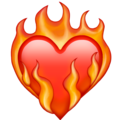📖️ Emojis and their meaning
The following emoji categories are sorted by group. You'll find all current WhatsApp and Facebook smileys as well as a description of their meaning. You can use the various emojis on any Apple, Android, and Windows device. Have fun with diving into the colorful world of emojis
🕵️ Emoji Search: What does your emoji mean?
Enter a word or emoji and start your search!
Find the right Emoji meaning in a snap with our Emoji Finder. Enter text, an emoji, or both, and discover the matching emoji. Hint: No multiple searches.
📖️ Category: Emojis and their meaning
😊️ Smileys & People
TOP 7


















































